2017 Trek Slash 9.9 29 Race Shop Limited
(discontinued)
| Where To Buy | |||
|---|---|---|---|
Free shipping on orders over $50 (continental U.S. only).
International shipping available. Some exclusions apply. |
|||
Free standard shipping on all bikes (continental U.S. only).
Flat rate shipping to Hawaii and Alaska. |
|||
Free shipping on orders over $50 (continental U.S. only).
International shipping available. Some exclusions apply. |
|||
Review by Joel Harwood // Photos by Peter Wojnar
When Trek debuted the Slash in 2012, their Active Braking Pivot and Full Floater suspension technologies were considered by many to be ahead of the time. The Slash received a number of refinements over the years, but never created significant waves in the all-mountain category. Fast forward to today and the Slash has grown 29-inch wheels, shifted a few degrees here and there, abandoned the Full Floater, and is now being hailed by many to be the benchmark of what a modern enduro bike should be. We’ve been aboard the Slash 29 since late summer, endured a heinously wet fall, and are still smashing out miles now that the snow line is dropping to the valley. Our Slash 9.9 Race Shop Limited (RSL) has seen numerous laps in the Whistler Bike Park, all-day epics, quick jaunts, and even a day of getting schooled by members of Canada’s National BMX Team just for kicks. Read on to find out whether the new Slash is truly the "undisputed king of the mountain."

Slash 9.9 29 RSL Highlights
- OLCV Mountain Carbon main frame – MTB specific carbon designed to retain strength even after an impact
- 29-inch wheels with2.6-inch tire clearance (plus size tires not compatible)
- 150mm (5.9-inches) of rear wheel travel // 160/130mm (6.3/5.1-inches) adjustable fork travel
- EVO suspension link
- Fixed lower shock mount
- Metric 230x57.5mm shock sizing
- Active Braking Pivot (ABP) – Patented concentric pivot design to keep rear suspension active under braking forces
- E2 tapered head tube
- Control Freak internal routing – Simple, clean, and quiet cable management
- 1X drivetrain specific
- Straight Shot downtube with Knock Block – Optimizes stiffness to weight ratio and prevents crown impacts against frame
- Mino Link – A quick flip chip allowing bottom bracket and head angle adjustments
- Carbon Armor – Designed to slow and redistribute impacts over a larger area
- G2 geometry – 51mm fork offset for improved 29er handling
- PF92 bottom bracket with ISCG05 mounts
- Bottle mount
- Boost 110/148mm axle spacing – Wider dropouts to improve wheel stiffness, add tire clearance, and allow shorter chainstays
- Claimed weight (size 17.5, no pedals): 28.2-pounds (12.79kg)
- MSRP: $7,999.99 USD
Geometry

The Slash 29 is available in four sizes, including a rarely seen and difficult to make size 15.5 (Small) version built on Trek's decade of 29er experience. Note that the numbers above reflect the geometry with a 160mm travel fork, though it can also be used with a 150mm fork to suit ride demands. Doing so pushes the "bike closer to the 'trail' end of its use spectrum, lowers bottom bracket heights by about 3-4mm, and steepens the head tube angle by half a degree." Trek's continued use of a Mino Link flip chip at the top of the seat stays makes further high/low geometry adjustments a breeze.

Initial Impressions
Even though long-travel 29er rigs are becoming increasingly popular, the Slash unveiling last spring had most media squids, racers, and armchair engineers keen to climb aboard. Being a combination of the three, we were thrilled when the bike arrived on our doorstep. Having already covered a number of the features unique to the Slash when the bike originally launched, we weren’t looking for a single revolutionary feature, but we were most impressed by the overall package. The carbon armor, stylish combination of matte and gloss paint, high end components, good angles, and bold Trek branding are a sight to behold. Some scientists would argue that the color of victory is red – in this case: Viper Red. Even though the updated Slash looks like a winner while standing still, on paper, and underneath Trek’s factory pilots, what we truly wanted to find out was whether the bike could live up to the hype and whether any faults would reveal themselves.
Upon closer inspection, the Slash features a number of updates and refinements compared to the previous generation. A handful are straightforward: a bump from 650B (27.5) to 29-inch wheels, more aggressive geometry, Boost axle spacing, and Metric shock sizing to name a few. Perhaps less predictable was the introduction of the Straight Shot downtube, Knock Block, and the notably absent Full Floater.

Dylan Howes, Head of Trek's MTB R&D, offered a few reasons why: "By fixing the lower shock mount, we were able to better package the bike and large diameter wheel for the travel we wanted. We were also able to design a much stiffer chainstay, but also a much stronger chainstay – however, as the chainstay was already more than strong enough with the Full Floater, this meant it could get much lighter."
Furthermore, we inquired about the suspension curve with the fixed lower shock mount and whether it was a refinement of what the Full Floater offered or if it was a new direction altogether. "We had a few reasons to move away from Full Floater on this bike," Howes told Vital, "but the main idea was to keep the kinematics and leverage rate the same. The way in which the shock and the frame work together is still the most important characteristic in how the bike will perform and what the ride quality will be."

The leverage rate is slightly more progressive than the updated Remedy for bigger hits and slightly lower than the previous Slash, a change that came about as large volume negative air chambers became the norm for shocks. The changes are modest on paper, but Howes assured us that they would be profound on the trail.
Getting the Slash setup was simple. Cable routing was a snap, the FOX suspension was positioned to the recommended settings, and off we went.
On The Trail
This fall, Squamish, British Columbia saw more rain than we can remember. How much you ask? We heard a report that it had rained for 29 of 31 days in October and can’t say that it sounds like hyperbole. It didn’t stop us from riding, but it did mean that the Slash saw a lifetime of precipitation and more than a healthy helping of foul conditions in the four months that we’ve been riding it. We also spent a few days riding the Whistler Bike Park (where the bike was wildly popular in the lineup) in addition to the surrounding communities of Pemberton, Whistler, and North Vancouver.
At a hair under six feet tall, we opted for a size 19.5 (Trek's size Large equivalent). With generous reach numbers, we probably could have gotten away with a 17.5 (Medium), however with long arms and inseam we felt right at home. The fit was comfortable from the outset and the updated geometry seemed to compliment the intentions of the Slash. With the Mino Link set to slack, the aggressive 65.1-degree head angle felt surprisingly snappy as we headed to the woods for the first time.

As mentioned, we used the Slash as our daily driver. At Vital MTB we have ridden a number of modern enduro bikes that felt like downhill bikes that climb tolerably, however in this case we found the Slash climbed admirably for a long-travel enduro bike. The suspension remained relatively active, however the two-position FOX Factory Float X2 shock offered a firmer option for road climbs. We usually opted to leave the suspension untouched while climbing, but we would have likely used it more often if our daily climbs weren’t quite as technical. With an effective seat tube angle of 73.6-degrees, seated climbing isn’t as upright or central as the new Specialized Enduro 29, but we never once felt that it was too slack, nor did we feel that the FOX Factory Talas 36 needed to be lowered to 130mm in order for the bike to climb well. In fact, we only used the lower travel setting once. We preferred instead to adjust our seated climbing position to the nose of the saddle in order to mimic a steeper seat tube, which also eliminated any front wheel wandering. Standing to climb had much the same result. The suspension remained active, yet not so much so that we felt too much energy was being wasted and enough that the rear wheel maintained solid traction on technical bits. Overall, the updated Slash climbs quite well for any bike, let alone a Float X2 equipped wagon-wheeler intended for Enduro World Series domination.

Even though the Slash is intended as a hard-hitting race machine, we were pleasantly surprised by how well it handled intermediate trails, rolling terrain, and halfway speeds. Some race bikes tend to feel like overkill until they’re up to pace or on gnarly terrain, however we never found the Slash to be cumbersome. The bigger wheels undoubtedly help to keep things rolling along and our Float X2 was lively, responsive, and supportive through the initial and mid-stroke. The subtle geometry updates were an asset here too. Trek deliberately kept the bottom bracket drop reasonable in order to allow riders to get the odd pedal stroke, rather than constantly managing rock strikes. The wheelbase of the bike never seemed to inhibit our ability to manage tight corners or awkward sections, nor did the slack head angle. Some enduro weapons require more rider input and don’t really come to life until they’re being ridden hard, but the Slash is not one of them. We had a blast on mellower trails and could still horse around without working too hard.

Without a doubt we were most interested in the descending prowess of the Slash. Trek has been vocal in their belief that their newest version of the Slash is potentially their best bike ever, and that it provides straight-line confidence previously only available with 200mm of travel and a dual crown fork. After a couple of tuning rides, we headed for the Whistler Bike Park to figure out whether or not this was the case. Our very first lap started out mellow with a quick jaunt down the flowy Blue Velvet trail. Things went from mellow to bone-rattling as we made our way to Original Sin, Goats Gully, and eventually to Renegade, much more technical trails with plenty of square edges. Even though the Slash has less travel than a full-blown DH rig, we were impressed at how composed the bike remained on trails with so many successive hits and deep holes. The bike was supportive without feeling harsh, and there was just enough progression that heavy hits didn’t bottom the suspension too abruptly – though we suggest running an additional volume spacer if spending more time in the park. The geometry allowed us to remain centrally situated and we never felt that the front or rear centers were too short, or that there wasn’t enough bottom bracket drop at high speeds or on successive hits.
The chassis stiffness was an asset here too – the bike holds a line very well and seemed to go directly where we pointed it. Trek claims it's the stiffest 29er they've made, rivaling or besting the Session thanks to a super wide main pivot, fixed lower shock mount, taller chainstays, and the Straight Shot downtube design. Compared to previous long-travel rigs, not only was the frame better off, but so were the wheels.

Even more notable was how the Slash handled braking bumps. Where we would still give the nod to a big bike on full-blown downhill tracks, we found ourselves gaining on our buddies when we lapped Whistler’s heavily used jump trails. Lap after lap we would retain more speed and brake with more control through braking bumps – a testament to Trek’s fixed lower link suspension design, ABP, and the improved performance offered by the Float X2. Simply put, the Slash went right were we wanted and carried more speed than any other trail bike we’ve ridden.
High speed cornering is excellent. The Slash was never a burden to lean. The general balance and composure gave us the confidence to lean the bike aggressively on flat, technical, and bermed corners alike. Through each successive corner, we found ourselves giggling as we leaned the bike further. With so much high speed stability we expected that the Slash might be a little bit sluggish to transition between turns, but again we were pleased by the bike’s performance. Maneuverability was not as outstanding as some 650B counterparts, but we could still snap the bike through corners just as quickly with more forceful rider inputs. The ultimate limit was the Bontrager SE4 Team Issue tires, which couldn’t match the frame’s capabilities in the cornering department. Trek kindly provided us with a set of SE5 tires too, which were far superior in the cornering department and unlocked even more cornering traction. With the SE5 tires we could rail high speed turns almost as well as a downhill bike, but could still snap the bike around in tighter, more technical trails with an active riding style. The Slash 9.9 RSL corners like a formula one car and seems to maintain traction everywhere – just brake, rail, accelerate, and repeat.
We could keep going, but instead we’re going to keep it concise: the Slash 9.9 RSL is great everywhere and descends with almost the same confidence as a downhill rig.
Build Kit
Our bike was the $8,000 USD Slash 9.9 RSL, which stands for Race Shop Limited and is intended to be a no compromise, race-ready build. Trek also offers the Slash with a more modest, albeit still dialed setup in 9.8 trim with Rockshox suspension at $5,500, as well as a frame/shock/headset/stem combo for $3,700.
The most notable component choice was the use of the FOX Factory Float X2 shock. While FOX might have gotten off to a troublesome start with a recall issue, we have nothing but positive things to say about this shock so far. It suffered heinous weather, 25 minute downhill laps, climbed, contoured, and was completely maintenance free.

Trek's recommended shock settings were close, but we ended up adding volume spacers and running more than the recommended pressure. In combination with a simpler, fixed lower link that provides a similar feel with fewer moving parts, the FOX Float X2 helps create a rad rear end. Additionally, it's great to finally see Trek using standardized shock measurements, which means you can swap things to your heart's desire.
We weren’t quite so smitten with the front suspension. The FOX Factory 36 Talas fork is great, but it doesn’t provide the same tuneability or damping performance as the 36 Float. Trek product managers noted that travel adjust forks are wildly popular in some markets, and somewhat of a ‘must have’ for some consumers, but we found that the Slash climbed so well at full fork travel that we’d forgo travel adjust for all-out monster trucking confidence. For us, the Talas 36 could not match the performance of the rear suspension, and we'd prefer the Float until the Talas can accept volume spacers to tune progression. We experimented with different oil weight, oil volume, compression, and air pressure, but we just couldn’t get the Talas to match the Float, especially under hard braking and with high speed successive hits.
What can we say about the SRAM Eagle drivetrain that hasn’t been said already? Any time a new product can better compensate for our lack of fitness, we’ll take it. From a performance standpoint – by climbing with a higher RPM rather than grinding with high wattage, we had more energy for shredding when the hill crested. In racing scenarios, we could run a larger chainring and still climb comfortably. Eagle is undoubtedly a better 1X drivetrain than SRAM's previous versions thanks to many refinements.

Trek’s in-house components have come quite a distance since they first appeared. The Bontrager cockpit can’t be faulted – it was light, looked great, and stiff without being harsh. The Bontrager Line Elite 30 wheelset was far more solid than previous offerings, which were too flexy and dented easily. After four months of abuse they haven’t seen a truing stand and only suffered one significant dent. Also worth noting is the Rapid Drive hub, which engaged quickly, rolled well, and provided an enjoyable buzz whilst coasting.
Unfortunately, our Bontrager Drop Line seatpost did not meet expectations. The foul weather got the better of the post and caused major friction and stanchion wear. After chatting with Trek’s product managers about the issue, they informed us that they have already updated the post and there shouldn’t be any issues moving forward.Assuming that the updated seatpost solves the reliability issues, we would like to see a longer stroke dropper. 125mm of drop may be adequate for small riders, but for average and tall folks a longer option would be a better choice. At 5'11" we felt that our range of motion was restricted by the saddle being in the way and experienced a couple of inadvertent seat bounces on jumps at the Whistler Bike Park. Just like the inclusion of 800mm handlebars, we would like to see bikes equipped with longer travel dropper posts and include a travel limiting collar, giving each consumer the option to fine tune as needed. In Trek’s case, this is an easy refinement as the Drop Line post is available in a 150mm version already.
The Bontrager SE4 Team Issue tires did the job, but we never fully trusted them. As we mentioned, Squamish and the surrounding areas offer a wide variety of trails, conditions, and speeds. For us, the Bontrager SE5 Team Issue tires would have been a better choice out of the box and we would speculate that most riders would prefer the same setup. The SE4 gets the job done, whereas the SE5 is a great tire that we wouldn’t hesitate to run on any bike and in any conditions. Once we swapped them to the SE5 Team Issue tire, we instantly felt more confident in every situation.
Finally, Trek's unique Knock Block headset system performs as you'd expect - like a headset. Even though the bars can't be turned past about 75-degrees to protect the frame from damage due to the straight downtube design, the system is never a hindrance on the trail. Only when loading the bike onto the tailgate of a truck do you really notice it.
At $8,000 USD the Slash 9.9RSL should be close to perfect. Admittedly we are splitting hairs when it comes to tire and fork choices, but we felt more at home and the bike performed better (for us) with the component changes we mentioned. We think the Slash would be a great candidate for Trek’s Project One custom build program and would be first in line to build if it were. If not, additional build options or component choices to meet the needs of more specific markets.

Long Term Durability
Our Slash 9.9 RSL took a beating – not so much in terms of the trails we rode, as we generally use the same options for the majority of our Squamish, BC based reviews – but it suffered a worse fate than others due to the weather in which it was consistently ridden. Regardless of this, the only issue that came about was the seatpost. We didn’t have to touch a thing on the frame throughout the entire test period, and other than some grit the in headset we basically rode, rinsed, and repeated. After four months of hard riding, almost 70,000 feet of elevation gain and loss, and worse weather than most can imagine, we’re confident in saying that if there were any additional durability issues, we would have found them. Trek backs the main frame and swing arm with a lifetime and three-year warranty, respectively.
What's The Bottom Line?
The Trek Slash 9.9 29 RSL is quite the bike. As a daily driver it was manageable on all types of trails, pedaled all day, hauled back to the chairlift, and required little maintenance. As a race bike it held speed extremely well, conserved rider energy, and offered nearly unmatched confidence. With an option to choose a FOX Float fork, Bontrager SE5 tires, and 150mm dropper we would have had a tough time not giving the Slash 9.9 RSL full points. Without these tweaks the bike is still great – with them, nearly perfect. The Trek Slash 9.9 RSL might just be the new standard by which all others are measured.
Visit www.trekbikes.com for more details.
Vital MTB Rating
Climbing: 4.5 (relative to other 140mm+ travel bikes)
Descending: 5
Fun Factor: 4
Value: 4
Overall Impression: 4
Overall Impression with Suggested Component Changes: 4.5+
Bonus Gallery: 21 photos of the Trek Slash 29 up close and in action
About The Reviewer
Joel Harwood - Age: 33 // Years Riding MTB: 20+ // Height: 5'11" (1.80m) // Weight: 185-pounds (83.9kg)
Joel has been playing in the Coast Mountains of British Columbia for the last 11 years. If he isn’t coaching gravity racers he can be found tinkering in the garage or messing about at the pump track. He dabbles in all types of racing, but is happiest simply exploring the limitless trail networks of the Pacific Northwest. Attention to detail, time in the saddle, and an aggressive riding style make Joel a rider that demands the most from his products.
1 member reviews
The slash9.9 is nothing but wildfire, it’s smouldering looks hide what’s it’s built for and that’s speed. The Slash as a whole loves speed the faster you go the suspension starts to sing, traction is never a issue part being 29r and geo/suspension balance. Fox X2 never fails to impress through various content. The downside just sell a kidney and get carbon wheels and the ride evolves further and upgrade to a Float from Talas, it’s a bike that splits the field in half. You may find bike which may offer better performance in one area but fails in others, the slash rates high through all types of content you may encounter and ride > fast descent, DH,slow tech, tech climb, road climbs, pedal&flow.

full carbon size large sub 29lb.
In short it’s a big mountain fun bike with a pedigree racing bloodline.
0 comments
Post a reply to: Not for the shy
Specifications
| Where To Buy | |||
|---|---|---|---|
Free shipping on orders over $50 (continental U.S. only).
International shipping available. Some exclusions apply. |
|||
Free standard shipping on all bikes (continental U.S. only).
Flat rate shipping to Hawaii and Alaska. |
|||
Free shipping on orders over $50 (continental U.S. only).
International shipping available. Some exclusions apply. |
|||





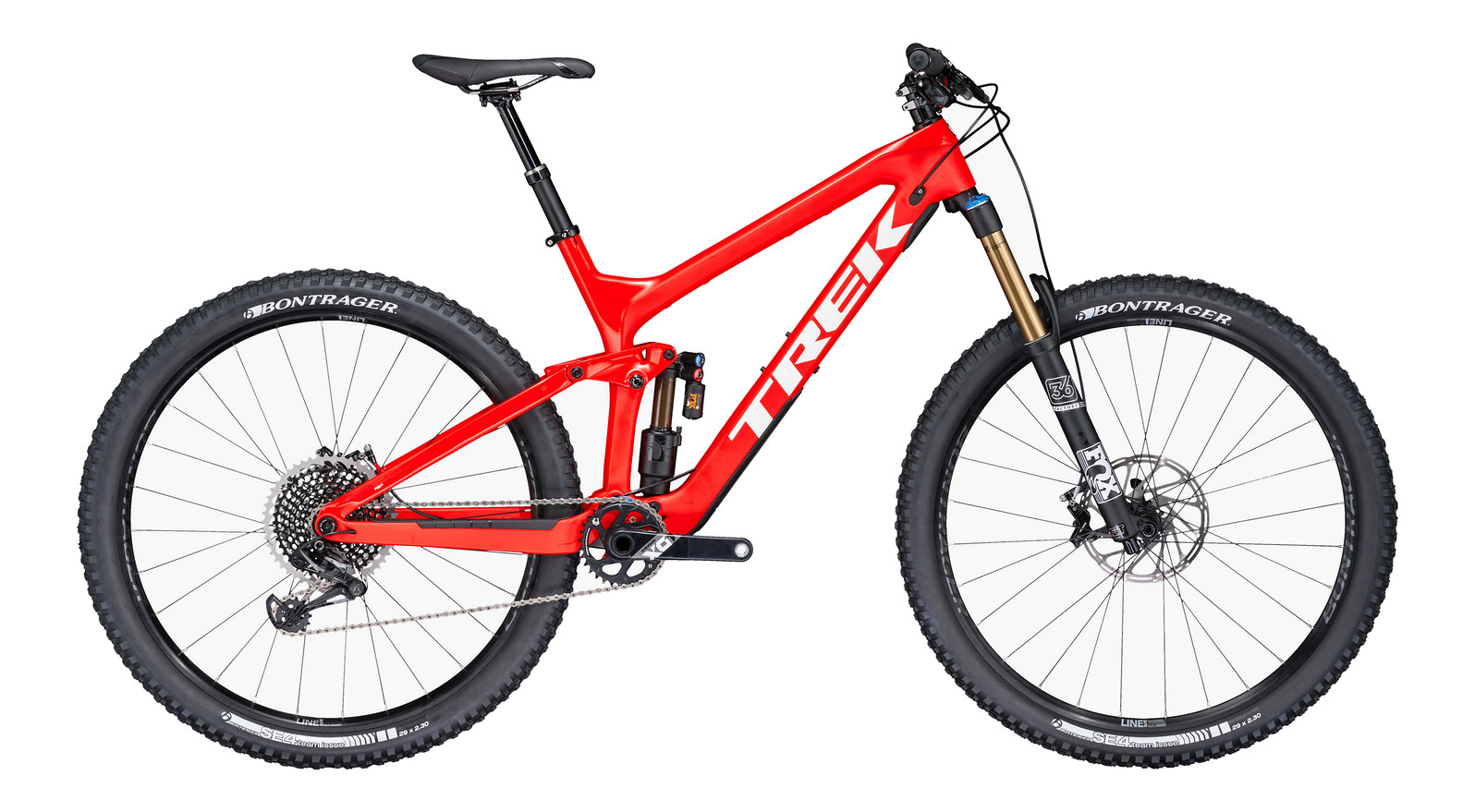






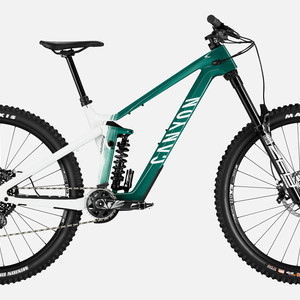
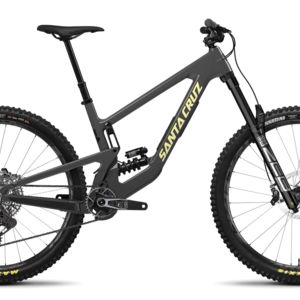

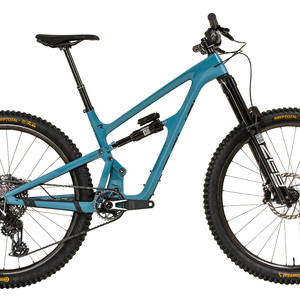
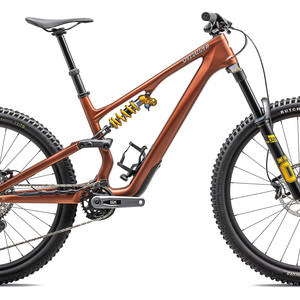



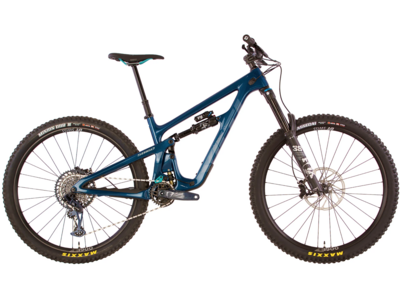




25 comments
Post a reply to: Tested: 2017 Trek Slash 9.9 29 Race Shop Limited